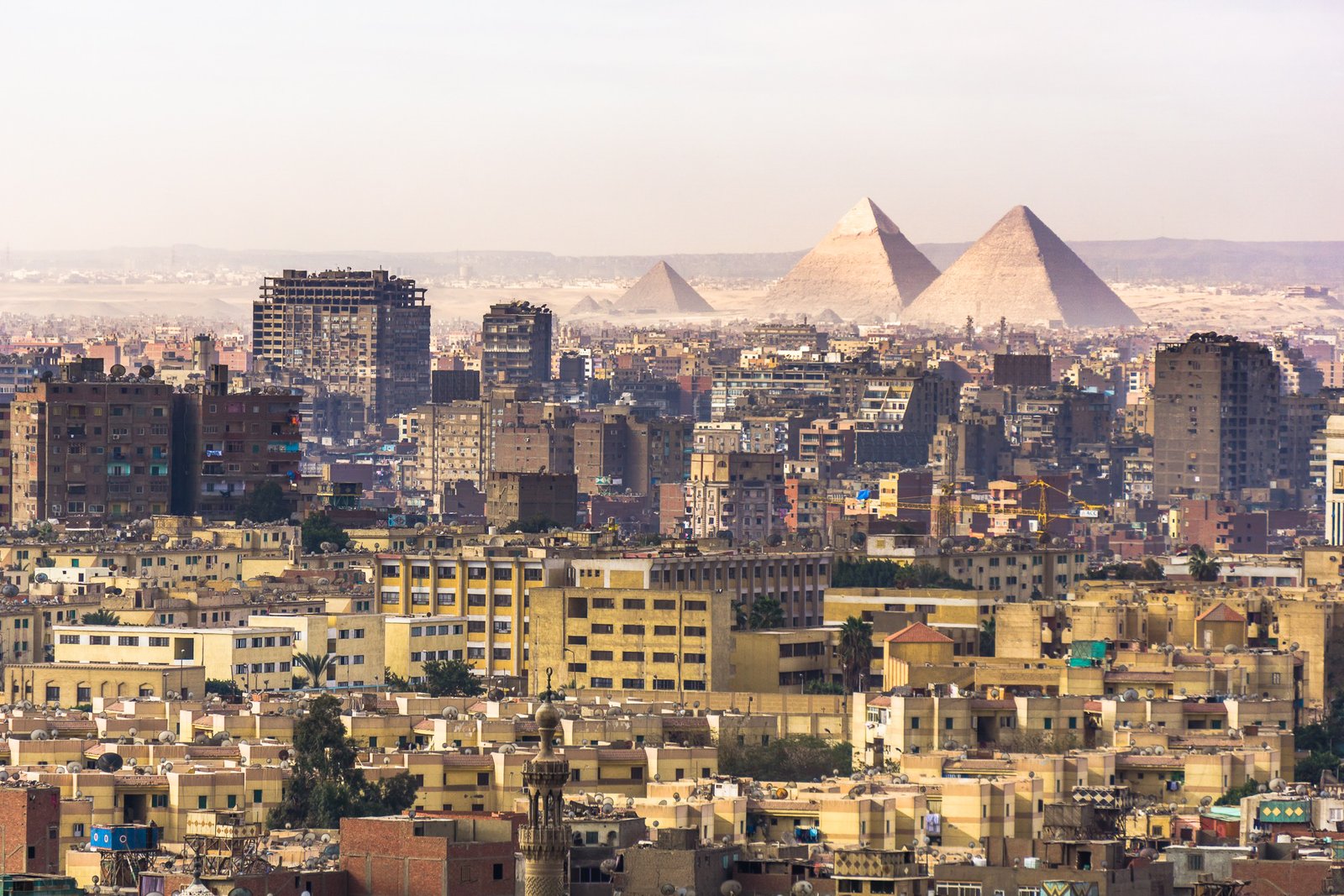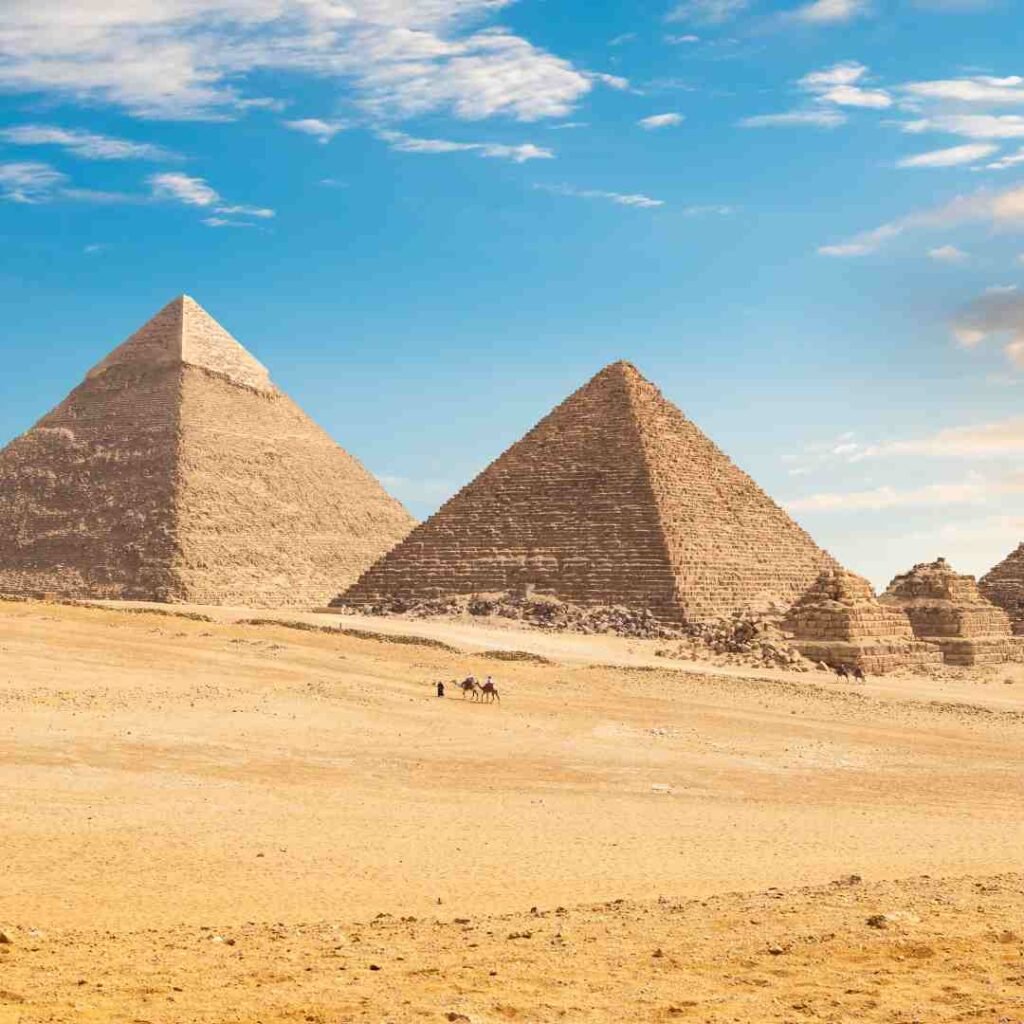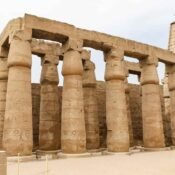
Giza city in Egypt
The Giza Prefecture’s capital is Giza City. It was formally established in the fourth century BC. In Egyptian history, it was possibly a small village from a long time ago. On the west bank of the Nile, it was situated in the middle of the path connecting Heliopolis and Memphis. The city south of modern-day Giza was the renowned capital known as “Memphis.” Throughout ancient Egyptian history, Memphis was a significant commercial and cultural hub. Memphis experienced a significant decline in importance as Christianity expanded throughout Egypt.
Memphis was abandoned after the Muslim conquest, while Giza was esteemed more. Amr Ibn Al-As, the leader of the Arab conquest army, gave the order to fortify it adequately. Great mosques were constructed in Giza, but sadly none of them are still standing. There is still a sizable quantity of greenery and agricultural activity in this area, which is primarily farmland. It has also experienced floods from the Nile throughout its history, particularly in the lowlands. For many years, Giza was just a tiny town encircled by modest farming and fishing settlements and rural villages.

Memphis was left behind after the Muslim conquest, but Giza was more highly valued. Amr Ibn Al-As, the Arab conquest army’s commander, gave the order to fortify it well. In Giza, magnificent mosques were constructed, but sadly none of them are still standing. Despite the fact that a large portion of this region is farmland, there is still a sizable amount of vegetation and agricultural activity. Additionally, particularly in the lowlands, it has experienced Nile flooding throughout its history. Giza was just a tiny town for many years, surrounded by small farming and fishing communities and rural villages.
Giza in the Contemporary Era
The Suez Canal was officially opened in 1869 in front of the Egyptian governor Ismael Basha, as well as notable dignitaries from throughout the world, including kings, princes, princesses, counts, and ministers. and most importantly, French Empress Eugénie, the third French Emperor’s wife. In order to facilitate transit and visitation, a significant program of public works was planned, implemented, and involved building, reconstruction, decoration, and maintenance. This is how “Pyramid Avenue” projected in Giza, a place of renowned visitors, notably historical landmarks.
New neighborhoods with schools, hotels, restaurants, banks, and other businesses popped up. Beginning in the early 20th century, Cairo University’s grandiose vision took shape. a plot of land close to the Nile’s west bank. The government also decided to be New Cairo University. However, it actually and physically belongs to the nation of the city of Giza. In addition to Egypt, the Arab region and Africa also have this university as their parent institution.
Following that, numerous embassies were constructed in the city, particularly in the El Duqqi neighborhood and the city center. The city of Giza is currently a part of Greater Cairo for geographical and demographic reasons, although historically they were two different provinces with their sovereign mayors and councils:
Greater Cairo included the entirety of Cairo, the majority of Giza, and a portion of the Al-Qalyubia Province, which is located to the north of modern-day Cairo. Around 20 million people are living in this area.
Diversity of Giza monuments
The majority of the structures at Giza date to ancient Egypt. Contrary to Cairo, which possesses the majority of Muslim and Christian Coptic monuments on Egyptian soil, old Muslim and Christian monuments are uncommon in the city. There are not many historical sites from ancient Egypt.
Sakkara, the expansive necropolis of the great ancient capital of Memphis, which contains a variety of monuments ranging from the pyramids above the stepped pyramid of King Zoser, and a large number of mastabas, the decorated tombs of ancient nobles with themes depicting wonderful scenes from daily life in ancient Egypt, are actually some of the most significant historical sites in Giza. Large underground chambers known as serapiums are where sacred bulls (Apis) are interred in enormous stone sarcophagi. Memphis’ ancient capital’s ruins can be found at Giza as well. Other significant historical sites in the area include Dahshour, Abu Sir, Atfih, and Abu Rawash; however, Bahareya is located 380 kilometres from the Giza border in the western desert. The Giza plateau, home to the enormous pyramids of Cheops, Chefren, and Menqueos, as well as the Sphinx, is the most significant location.
Recent Posts
Luxor day tour: Most Illuminated Temples
Discover Luxury Nile Cruises
Designing the Perfect Itinerary for Your Nile Cruise




